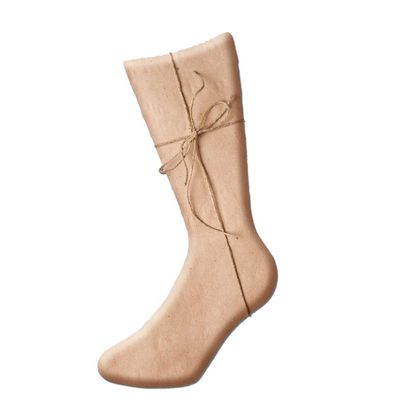
I hate shopping for clothes, especially in the crowded confines of Manhattan, where long dressing-room lines and jam-packed store floors are the norm. So on Sunday night, when I arrived in New York for a week only to discover that I’d forgotten to pack socks, I panicked. I’m not cool enough to pull off the sockless look, so I figured I’d need to buy some new pairs in the city somehow.
Unless, I thought, I could pay someone to buy them for me.
There have always been same-day couriers in Manhattan, for handling time-sensitive corporate documents and the like. But now the world of expedient delivery has been opened up to anyone with a smartphone.
Uber, the car-service company, is now among those delivering packages to Manhattanites at the push of a button. The company launched a courier service, UberRUSH, earlier this year in hopes of extending its business to include transportation of physical goods as well as human bodies. There’s also Postmates, a San Francisco–based company that raised $16 million in February and operates in several large U.S. cities, promising deliveries from your favorite restaurants and stores within an hour. (It’s especially popular with hungry start-up workers in the Bay Area.) There’s WunWun, an app-based delivery service that operates only in New York and the Hamptons at present and recently slashed its prices to include free delivery on most items. Even Google has gotten into the same-day game with Google Shopping Express, which is being tested in the Bay Area, New York, and L.A. before, presumably, being rolled out more broadly.
If you were in New York for the first dot-com boom, you probably remember Kozmo, the well-funded start-up that promised one-hour delivery of movies, CDs, and other consumer goods via bike messenger. Kozmo famously flamed out after burning through millions of dollars in cash — it refused to charge delivery fees and therefore lost money each time a customer placed an order — and became one of the enduring symbols of unsustainable business models.
But despite Kozmo’s flameout and the failures of similar services like Urbanfetch, same-day delivery remains the Holy Grail of web-based logistics. Partly this is because on-demand services like Uber and Lyft, which order up cars at the push of a button and have increased the consumer appetite for instant gratification. And partly it’s because the so-called “last-mile problem” — how to get individual packages from a store or warehouse to a customer’s home — is one of the only retail segments Amazon hasn’t yet conquered. (Though it’s trying.) The last-mile problem is really a mathematical challenge; to make the numbers work, the profit potential has to outweigh the costs of fuel, couriers, and the back-end support needed to get packages out to customers at maximum speed. And solving it could allow brick-and-mortar retailers to compete more aggressively with giants like Amazon, by offering faster order fulfillment than even next-day shipping will allow.
“We’re very lean compared to the money they raised at Kozmo,” Bastian Lehmann, the CEO of Postmates, told Jason Calcanis in a video interview. “To a certain degree, they were ahead of their time by a lot. And they also had a very adventurous business model.”
How are these new services different from Kozmo? Well, for starters, some of them are profitable. (“We’re making money on every order,” Lehmann told Calcanis.) None of them are paying for the huge warehouses full of inventory that Kozmo once did. And even though the fundamental price dynamics remain the same — small-to-nonexistent delivery fees, no minimum order sizes, sub-hour delivery — the technological advances of the last decade have given the new breed of delivery start-ups certain advantages, like the fact that delivery workers can now locate their customers using smartphone GPS. And even the start-ups that aren’t yet profitable have plans to become so, with venture-capital investors who are willing to subsidize their operations in the meantime.
“We don’t make money on every delivery, but we don’t lose money on every delivery,” WunWun CEO Lee Hnetinka told me in an interview. He explained that since WunWun doesn’t pay its delivery people, called “Helpers,” an hourly wage (they work for tips), it can afford to waive delivery fees without booking a loss on every purchase. Eventually, he added, the company hopes to make money by charging commissions to retailers in exchange for prime placement on the app. “Our entire revenue we plan to do off, basically, advertising — by powering these offline stores online,” Hnetinka said.
To test the new breed of same-day delivery services and fix my socklessness at the same time, I decided to conduct a race. I would give each of four same-day delivery companies the same instructions — send a messenger to a store of his or her choosing, pick out one pair of socks (the only guidance I gave was that they should be “colorful, eye-catching men’s socks”), pay for the socks, and bring them to my office. The winner would get, well, nothing, other than any applicable fees and a good-size tip. But we’d know for certain which delivery services stack up.
My experiment didn’t go totally smoothly. (I missed a Google Shopping Express delivery, and when I found out that UberRUSH doesn’t let its messengers make purchases at a store, I had to convince a friend to let me borrow his socks for a few hours.) But on the whole, the process was remarkably efficient. At 11 a.m., I had no socks. Several hours later, I had multiple pairs, delivered to my door from points across the city. And it only set me back a mere $100 or so.
Here are the results of the Great Sock Race of 2014:
WunWun
Socks ordered: 11:56 a.m.
Socks delivered: 1:07 p.m.
Time elapsed: 1 hour, 11 minutes
Cost of socks: $28.00
Cost of delivery (not including tip): free
Total cost: $28.00
Delivery notes: The WunWun courier helpfully solicited my opinion on which kinds of socks I wanted. He even sent me a photo from J.Crew with several possibilities to pick from. (I chose the ones with the monkeys.)
Grade: A
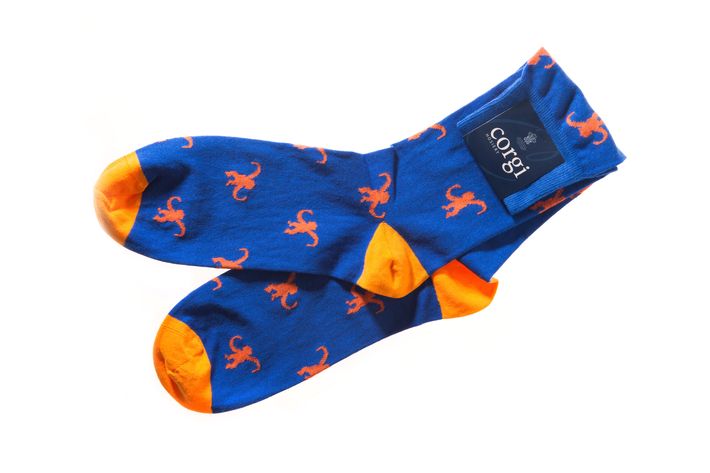
Postmates
Socks ordered: 12:00 p.m.
Socks delivered: 12:47 p.m.
Time elapsed: 47 minutes
Cost of socks: $28.00
Cost of delivery: $8.27
Total cost: $36.27
Delivery notes: Postmates’ app allows you to track your delivery-in-progress on a map, a good feature for the anxious. The Postmates delivery guy also gave me a coupon good for $15 off my next Postmates purchase, meaning that although this delivery wasn’t free, my next one will be.
Grade: A-
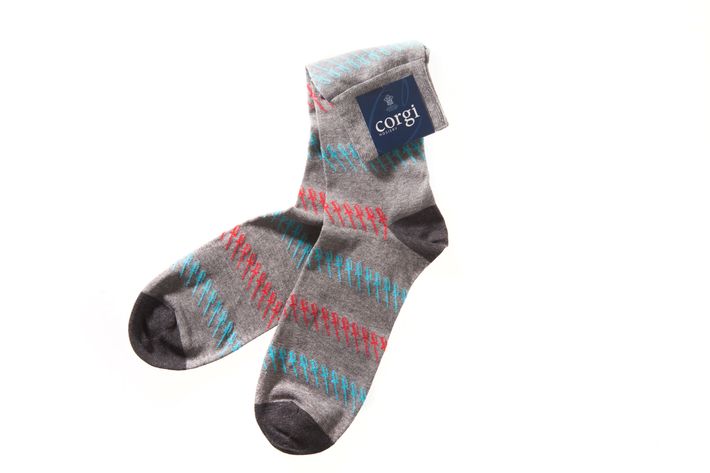
Google Shopping Express
Socks ordered: 12:04 p.m.
Socks delivered: 6-10 p.m., a day later. (Unlike the other services, Google Shopping Express gives you a Comcast-like four-hour window for delivery. I had an appointment outside the office last night and wasn’t around to take the delivery in person. It’s been rescheduled for tonight.)
Time elapsed: 30+ hours
Cost of socks: $3.99
Cost of delivery: free
Total cost: $3.99
Delivery notes: Google Shopping Express works mainly with big-box chains, so these socks came from Target, not J.Crew. The four-hour delivery window is annoying, but it’s necessary, since Google batches deliveries on trucks instead of sending them out one by one as orders arrive.
Grade: C
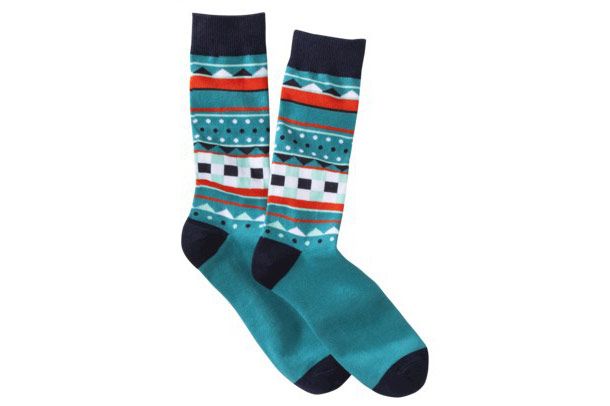
UberRUSH
Socks ordered: 1:02 p.m.
Socks delivered: 1:50 p.m.
Time elapsed: 48 minutes
Cost of socks: free (since they were borrowed from a friend – thanks, Rembert!)
Cost of delivery: $26.00 ($25.00 delivery charge, plus $1 “Emergency Messenger Fund Fee”)
Total cost: $26.00
Delivery notes: The UberRUSH courier zoomed from the Upper West Side to Canal Street on a Razor scooter in 27 minutes. So he wins the effort prize. But UberRUSH would be much more useful if it allowed messengers to make purchases for you. As is, it’s mostly good for transporting documents, keys, or other important items you already own to friends or colleagues across town.
Grade: B+
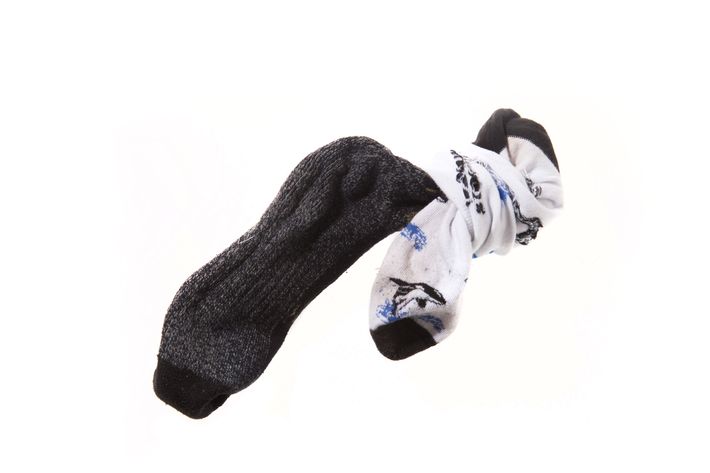
Verdict
Overall, I’m still not completely sold on same-day delivery services. They’re a boon for the lazy, but even though I tipped my deliverymen well, I still felt guilty about pawning my errands off on someone else. That said, most of us get food delivered to us semi-regularly and have no moral compunction about it. Why not clothes, iPhone chargers, or toilet paper?
The bigger question, in the long term, is whether any of these last-mile specialists will ever be sustainably profitable. I have my doubts. There simply may not be enough impatient customers to create the volume necessary to make the math of same-day delivery work, especially in big cities where many stores already have their own delivery squadrons. And once Amazon gets its same-day delivery strategy ironed out, it may be impossible for smaller outfits to compete.
For now, though, it’s best to take advantage of the fruits of the start-up economy while they exist. So the next time you’re dreading a trip to the store, sit back, tap the app of your choice, and make the store come to you.





























